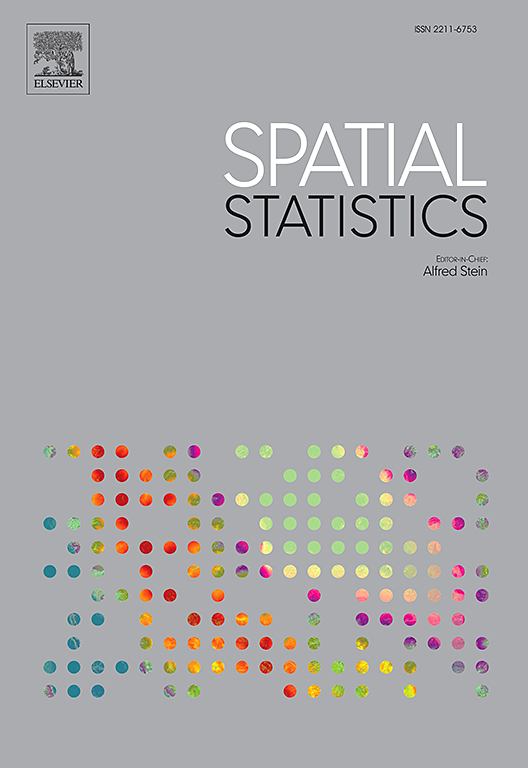基于社区通报的武汉市新冠肺炎疫情时空动态分析
IF 2.5
2区 数学
Q3 GEOSCIENCES, MULTIDISCIPLINARY
引用次数: 0
摘要
了解传染病暴发的精细尺度空间动态对于有效的城市流行病应对至关重要。本研究利用了一个新的数据集,该数据集包含2700多个社区一级的疫情通报,这些通报是在中国武汉COVID-19早期爆发期间在居民区和通过社交媒体公开共享的,以绘制2020年2月2日至3月4日期间该病毒在城市内的传播情况。在对这些通知进行手动结构化和地理编码后,我们构建了一个高分辨率的时空数据集,其中包含1532个社区的13346例确诊病例。利用空间统计技术,我们确定了空间聚类的演变,疫情中心的方向转移,以及7个具有统计意义的时空聚类,相对风险范围为1.21 ~ 12.48。我们的研究结果揭示了城市形态、人口密度和建筑环境特征在塑造传播动态方面的关键作用。值得注意的是,青山区由于其开放的社区设计和遏制措施的延迟执行而成为持续的热点。本研究强调了志愿地理信息(VGI)在早期、精细流行病监测方面的价值,并展示了其在公共紧急情况下作为官方监测系统补充的效用。本文章由计算机程序翻译,如有差异,请以英文原文为准。
Spatiotemporal dynamics of COVID-19 in Wuhan based on community notifications
Understanding the fine-scale spatial dynamics of infectious disease outbreaks is essential for effective urban epidemic response. This study leverages a novel dataset of over 2700 community-level epidemic notifications, shared publicly in residential areas and through social media during the early COVID-19 outbreak in Wuhan, China, to map the intra-urban spread of the virus from February 2 to March 4, 2020. After manually structuring and geocoding these notifications, we constructed a high-resolution spatiotemporal dataset of 13,346 confirmed cases across 1532 neighborhoods. Using spatial statistical techniques, we identified the evolution of spatial clustering, directional shifts in epidemic centers, and seven statistically significant spatio-temporal clusters with relative risks ranging from 1.21 to 12.48. Our results reveal the critical role of urban morphology, population density, and built environment characteristics in shaping transmission dynamics. Notably, Qingshan District emerged as a persistent hotspot due to its open neighborhood design and delayed compliance with containment measures. This research underscores the value of Volunteered Geographic Information (VGI) for early, fine-scale epidemic monitoring and demonstrates its utility as a complement to official surveillance systems in public emergencies.
求助全文
通过发布文献求助,成功后即可免费获取论文全文。
去求助
来源期刊

Spatial Statistics
GEOSCIENCES, MULTIDISCIPLINARY-MATHEMATICS, INTERDISCIPLINARY APPLICATIONS
CiteScore
4.00
自引率
21.70%
发文量
89
审稿时长
55 days
期刊介绍:
Spatial Statistics publishes articles on the theory and application of spatial and spatio-temporal statistics. It favours manuscripts that present theory generated by new applications, or in which new theory is applied to an important practical case. A purely theoretical study will only rarely be accepted. Pure case studies without methodological development are not acceptable for publication.
Spatial statistics concerns the quantitative analysis of spatial and spatio-temporal data, including their statistical dependencies, accuracy and uncertainties. Methodology for spatial statistics is typically found in probability theory, stochastic modelling and mathematical statistics as well as in information science. Spatial statistics is used in mapping, assessing spatial data quality, sampling design optimisation, modelling of dependence structures, and drawing of valid inference from a limited set of spatio-temporal data.
 求助内容:
求助内容: 应助结果提醒方式:
应助结果提醒方式:


